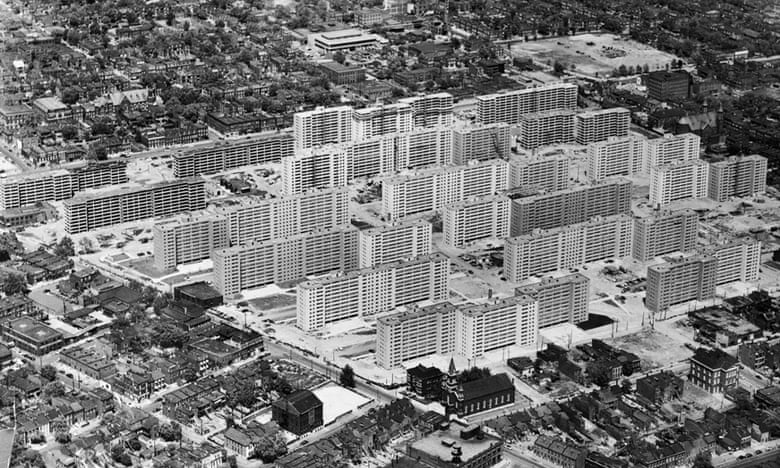If you propose a high-rise public housing project in America, your opponents will almost certainly use Pruitt-Igoe as a rhetorical weapon against you – and defeat you with it. The Captain WO Pruitt Homes and William L Igoe Apartments, a racially segregated, middle-class complex of 33 11-storey towers, opened to great fanfare on the north side of St Louis between 1954 and 1956. But within a decade, it would become a decrepit warehouse exclusively inhabited by poor, black residents. Within two decades, it would undergo complete demolition.
Whether you call Pruitt-Igoe’s short, troubled existence a failure of architecture, a failure of policy, or a failure of society, its fate remains bound up with, and reflective of, the fate of many American cities in the mid-20th century.
Even before the dust settled from the infamous, widely televised 1972 implosion of one of Pruitt-Igoe’s buildings (the last of which wouldn’t fall until 1976), the argument that the design had doomed it gained serious traction. Architectural historian Charles Jencks cites that much-seen dynamiting as the moment “modern architecture died”.
Other detractors used the occasion to hold up its architect, Minoru Yamasaki, for condemnation as a figurehead of all the supercilious, social-engineering modernists too high-minded and self-regarding to consider the needs of regular people. But on closer examination, Yamasaki comes out looking more like a victim himself.
Read the whole thing at The Guardian.
